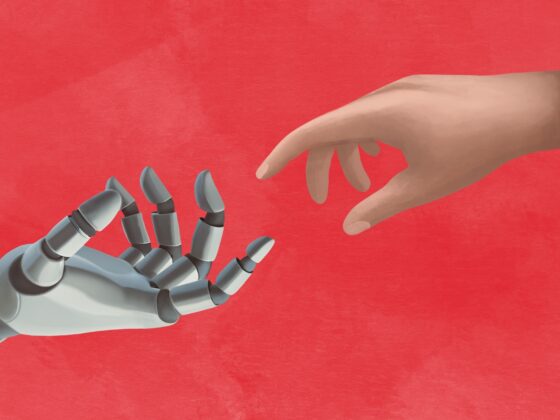Given the global estimate that approximately 9 to 14 million metric tons of plastic enter the oceans yearly—continuing to fragment into microplastics (MPs)—the urgency to understand their potential health effects has escalated. Particularly concerning is the growing body of evidence that MPs contribute to biological processes linked to cancer development, such as chronic inflammation, oxidative stress, and genetic damage. Therefore, analyzing the cancer risks posed by microplastic exposure is critical for informing public health strategies and mitigating the long-term impacts of our plastic-laden environment.
Microplastics are defined as synthetic solid plastic particles typically smaller than 5 millimeters in size, ranging from about 1 micrometer to 5 millimeters, with either regular or irregular shapes. According to the International Organization for Standardization (ISO) and environmental research published by the American Chemical Society, MPs include both primary microplastics—those intentionally manufactured at microscopic sizes such as microbeads used in cosmetics, industrial plastic pellets (nurdles), and synthetic textile microfibers—and secondary microplastics, which are formed unintentionally through the fragmentation and weathering of larger plastic debris in marine and terrestrial environments.
Alarmingly, microplastics have been detected inside human tissues, including the lungs, colon, liver, and even the placenta. Scientific analyses reveal MPs can translocate into organs due to their small size, which facilitates passage through biological barriers. Their presence has been confirmed not only in human feces but also in vascular and cancerous tissues, highlighting a direct exposure route from the environment to the human body.
MPs are widespread pollutants found in diverse environmental compartments, especially aquatic systems such as oceans. Studies estimate that ocean waters can contain up to thousands of microplastic particles per cubic meter, particularly in coastal regions where plastic pollution accumulates. Soils and sediments across various land use types globally have also shown significant contamination, with concentrations often reaching thousands of particles per kilogram of dry sediment, demonstrating MPs’ pervasive environmental presence.
“The presence of microplastics in seafood and water supplies is alarming. While direct links to chronic diseases like cancer remain under investigation, their capacity to adsorb persistent organic pollutants could indirectly influence carcinogenic pathways.”
Prof. Maria Wagner, Expert in Environmental Medicine
Swallowing, Skin Contact, and Even Inhaling
Exposure to MPs in humans primarily occurs through three pathways. Ingestion, through consumption of contaminated seafood and drinking water, is a primary route, with studies reporting MPs present in 100% of human stool samples analyzed (Wang et al., 2023). Inhalation of airborne microplastics—estimated to deposit hundreds of particles per square meter daily in urban environments—leads to MPs entering the respiratory tract (Catarino et al., 2024). Lastly, though less studied, dermal contact with MP-contaminated water and soil may contribute to exposure.
Recent findings indicate that MPs commonly smaller than 100 micrometers can penetrate biological barriers, enabling their accumulation in organs. MPs have been detected in human lung, vascular, and colorectal tumor tissues, suggesting their translocation from exposure sites into systemic circulation and potential involvement in pathological processes (Prata et al., 2023). This ability to infiltrate organs underlines growing concerns over their biological effects, including the potential to contribute to cancer risk.
Plastic Invasion: How Microplastics Are Taking Over Our Vital Tissues
According to recent studies, microplastics (MPs) accumulate significantly in human organs, with tumor tissues such as those in colorectal cancer often showing higher MP loads compared to adjacent non-cancerous tissues. For example, a 2025 study published in Nature Medicine reported that MPs, predominantly polyethylene (PE), polyvinyl chloride (PVC), and polyethylene terephthalate (PET), were found in large quantities within human liver, kidney, and brain tissues, with the brain exhibiting approximately tenfold higher concentrations than other organs (Campen et al., 2025). This bioaccumulation trend appears to be increasing over time, with plastic concentrations rising about 50% in human brains over the past eight years, according to research from the University of New Mexico (UNM) (Campen et al., 2025).
Besides the brain, MPs have been detected in the lungs, liver, placenta, bloodstream, and colorectal tumor tissues, pointing to widespread systemic accumulation. In human lung tissue, MPs were found at an average concentration of approximately 14 microplastic particles per gram, while vascular studies revealed MPs along blood vessel walls, potentially provoking chronic inflammation (Prata et al., 2023). Such widespread presence in key organs suggests MPs might affect multiple physiological systems simultaneously.
Moreover, microscopic examination of human tissues found that MPs often exist as nanoparticles or microscopic fragments smaller than 100 micrometers, which facilitates their capacity to infiltrate biological barriers and accumulate in organs (Campen et al., 2025). This infiltration can lead to tissue-level immune responses, oxidative stress, and localized toxicity, mechanisms known to contribute to carcinogenesis.
These findings underscore the urgency of understanding MP accumulation in human organs, as their pervasive presence alongside evidence of rising concentrations over recent years indicates a pressing health risk, particularly concerning cancer and other chronic diseases.
From Pollution to Proliferation: How Microplastics Drive Cancer Growth
According to recent scientific research, microplastics (MPs) induce several biological mechanisms that could contribute to cancer development. MPs are known to generate oxidative stress by increasing reactive oxygen species (ROS) levels in cells, which damages DNA, lipids, and proteins and impairs antioxidant defenses such as superoxide dismutase and glutathione (Corsi et al., 2024). This oxidative damage activates signaling pathways like MAPK, leading to inflammation and apoptosis dysregulation, which are classical hallmarks of cancer initiation and progression (Zhao et al., 2025). MPs also elicit chronic inflammation by triggering cytokine release and activating innate immune receptors such as toll-like receptors, contributing to a tumor-friendly microenvironment (Chen et al., 2025).
Moreover, MPs act as vectors for carcinogenic additives, including phthalates and bisphenol A, chemicals that disrupt endocrine signaling and are associated with malignancies such as breast and prostate cancers (Wang et al., 2025). These endocrine disruptors interfere with cellular hormone regulation, facilitating aberrant cell proliferation in hormone-sensitive tissues.
Findings from animal and cellular models reveal that MP exposure accelerates cancer cell proliferation and tumor growth. For instance, experiments with polystyrene nanoparticles have demonstrated increased tumor burden in ovarian and breast cancer models, along with impaired immune responses within the tumor microenvironment (Chen et al., 2025). MPs also induce alterations in gut microbiome composition, which in colorectal cancer models leads to enhanced inflammation and tumor promotion (Zhao et al., 2025).
Though epidemiological data directly linking MPs to cancer in humans remain limited, these mechanistic insights from experimental models provide strong evidence for MPs’ carcinogenic potential. According to a comprehensive 2025 review, the intersection of MPs’ oxidative stress induction, inflammation, DNA damage, and endocrine disruption creates a conducive environment for cancer initiation and progression (Zhao et al., 2025). This growing body of evidence underscores the urgent need for further research to elucidate the long-term cancer risk of microplastic exposure in humans.
“Microplastics (MPs) and nanoplastics (NPs) are emerging pollutants… MPs and NPs have been intentionally placed in cleaning products, coatings, cosmetics, and medical applications. They are also created when items such as bottles, clothing, tires, and packaging break down in the environment. MPs and NPs can be transported into streams and seas, carried into the air, and fall with the rain. MPs also attract pollutants that may already exist in the environment at trace levels, accumulating toxins and delivering them to the wildlife that eats them, leading to bioaccumulation through the food chain.”
Centers for Disease Control and Prevention (CDC), August 2024
From Fragments to Freedom: Reclaiming Our Earth and Health
Techniques such as Raman spectroscopy, Fourier-transform infrared spectroscopy (FTIR), and pyrolysis gas chromatography-mass spectrometry (Py-GC-MS) provide highly sensitive microplastic identification in complex biological samples (Phan et al., 2023). AI-assisted imaging, including convolutional neural networks (CNNs), automates the detection and classification of MPs by processing spectral and visual data, offering rapid, high-throughput assessment with improved accuracy and scalability (Khanam et al., 2025). Hyperspectral imaging integrates chemical and spatial information, enabling detailed mapping of MPs in tissues.
Importance of Pollution Reduction
Reducing plastic pollution is critical to lowering environmental and human MP exposure, necessitating plastic waste management improvements and public awareness campaigns. Enhanced wastewater treatment technologies can capture MPs before they enter aquatic environments, mitigating contamination of food and water sources (Stanford Medicine, 2025). Regulations banning or limiting microplastics in personal care products and textiles contribute to source reduction.
“Health risks exist at all stages of the plastic lifecycle, from production and use to recycling and disposal, as well as from legacy plastics in the environment. Increasing evidence about the consumption and inhalation of micro- and nano-plastics, concerns over exposure to hazardous chemicals used to give plastics specific properties, and the need for better waste management practices are becoming central to public health discussions.”
World Health Organization (WHO), August 2024
Call for Multidisciplinary Research
Comprehensive studies integrating epidemiology, toxicology, molecular biology, and environmental science are needed to clarify MPs’ health effects and elucidate cancer risk pathways (Ribeiro et al., 2025). Longitudinal human cohort studies combined with advanced biomonitoring can help define causality and exposure thresholds. Coordinated global efforts are necessary to standardize detection methods and policy responses.
Call to Action
Let us reclaim our earth, restore our health, and create a future free of plastic’s legacy.
The evidence is clear: microplastics are no longer just an environmental issue but a pressing public health threat. To safeguard both ecosystems and human health, immediate and coordinated action is essential. Policymakers must accelerate regulations to curb plastic production and ban unnecessary microplastics, industries must invest in sustainable materials and circular economy solutions, and the scientific community must unite to fill critical knowledge gaps through multidisciplinary research. Most importantly, individuals can contribute by reducing plastic use, supporting policies for cleaner production, and demanding accountability from corporations.
Protecting future generations requires collective responsibility—our choices today will determine whether microplastics remain a hidden hazard or become a catalyst for global change.












